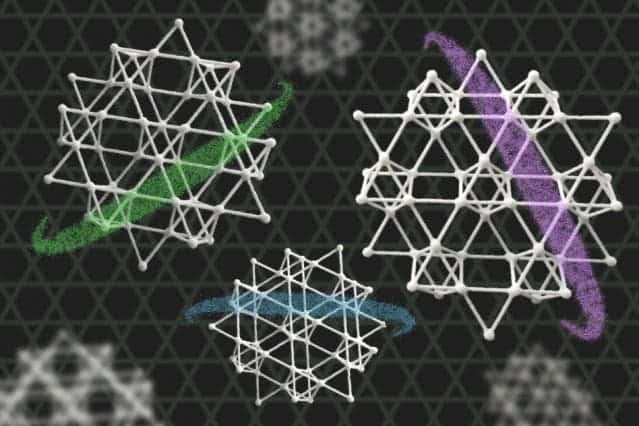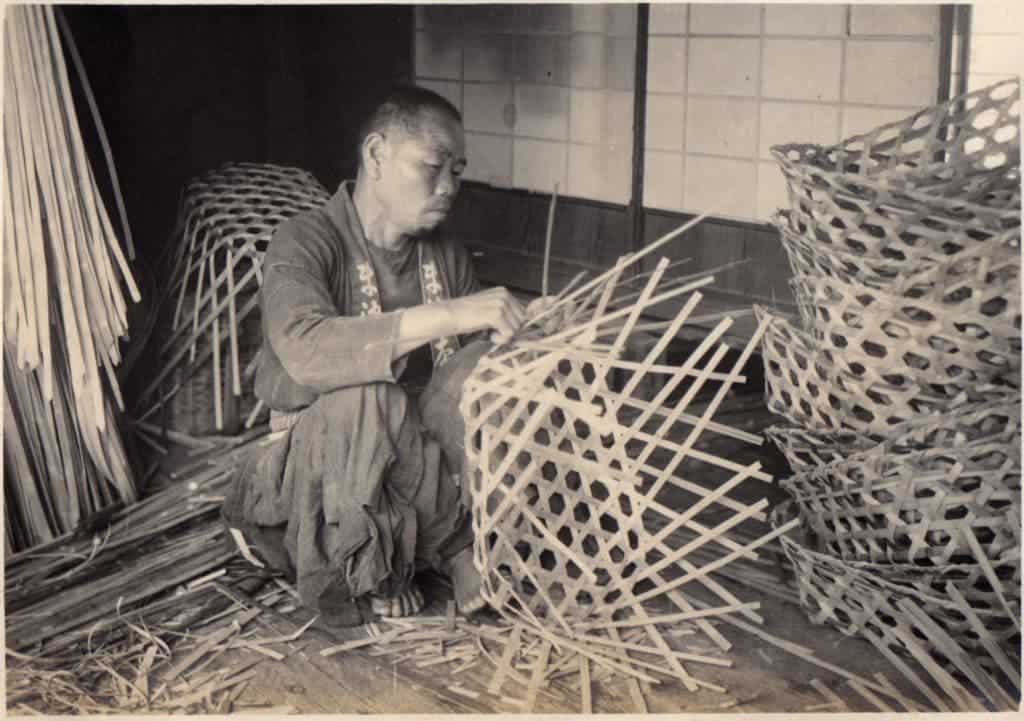
An illustration depicting the atomic lattice of a kagome metal. Credit: FELICE FRANKEL / CHELSEA TURNER.
Kagome is a popular style element in Japanese basket-making characterized by a symmetrical pattern of interlaced triangles, whose lattice points each have four neighboring points. While the kagome has fallen out of fashion, being replaced by plastic baskets, this elegant pattern is still of particular interest to physicists. Theoretically, were a metal to have atoms arranged in the same kagome pattern, it should display some peculiar electrical properties. Now, a mixed team of scientists at MIT, Harvard University, and Lawrence Berkeley National Laboratory did just that, and the product does indeed showcase exotic physics.
The resulting metal — the products of decades of research — is comprised of layers of iron and tin atoms, where each layer is arranged in the repeating pattern of a kagome lattice. When the researchers released an electrical current through the metal, instead of electrons flowing straight through the lattice (as is happens for the majority of metals), they veered or bent back within the lattice. This behavior mirrors the Quantum Hall effect, in which electrons flowing through a two-dimensional material exhibit a “chiral, topological state.”
“By constructing the kagome network of iron, which is inherently magnetic, this exotic behavior persists to room temperature and higher,” says Joseph Checkelsky, assistant professor of physics at MIT. “The charges in the crystal feel not only the magnetic fields from these atoms, but also a purely quantum-mechanical magnetic force from the lattice. This could lead to perfect conduction, akin to superconductivity, in future generations of materials.”
In order to make the metal, the team first ground iron and iron together, then heated the resulting powder at 1,380 degrees Fahrenheit (750 degrees Celsius). At precisely this temperature, the iron and tin atoms crystallize and arrange themselves in a kagome-patterned lattice. Finally, the crystals are submerged in an ice bath, which makes the lattice stable at room temperature.
“The kagome pattern has big empty spaces that might be easy to weave by hand but are often unstable in crystalline solids, which prefer the best packing of atoms,” said Linda Ye, co-author of the study and also from MIT. “The trick here was to fill these voids with a second type of atom in a structure that was at least stable at high temperatures. Realizing these quantum materials doesn’t need alchemy, but instead materials science and patience.”
According to the researchers, similar metals with kagome lattices could prove useful in a wide array of applications from quantum computing to “dissipationless” power lines that don’t lose energy.
Scientific reference: Massive Dirac fermions in a ferromagnetic kagome metal, Nature (2018).










